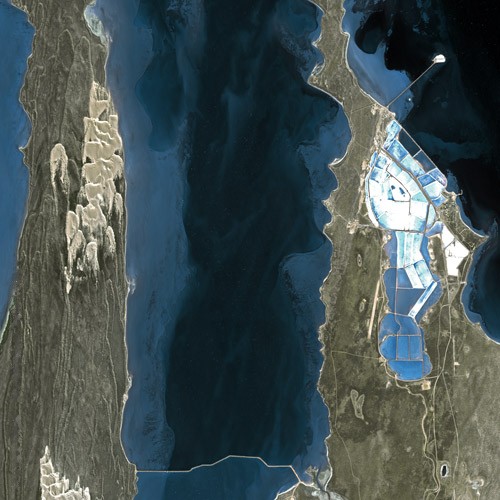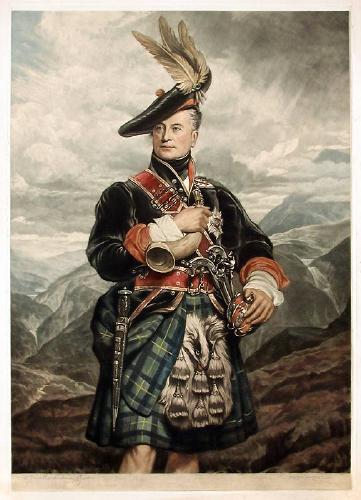|
Lagostrophus Fasciatus
The banded hare-wallaby, mernine, or munning (''Lagostrophus fasciatus'') is a marsupial currently found on the Islands of Bernier and Dorre off western Australia. Reintroduced populations have recently been established on islands and fenced mainland sites, including Faure Island and Wadderin Sanctuary near Narembeen in the central wheatbelt. Taxonomy The description of the species was published in the 1807 report of a French expedition to Australia. The authors, zoologist François Péron and illustrator Charles Lesueur, described a specimen collected at Bernier Island during their visit to the region in 1801, naming the new species as ''Kangurus faciatus''. Evidence suggested that the mernine was the only living member of the sthenurine subfamily, and a recent osteology-based phylogeny of macropodids found that the banded hare-wallaby was indeed a bastion of an ancient lineage, agreeing with other (molecular) appraisals of the evolutionary history of ''L. fasciatus''. ... [...More Info...] [...Related Items...] OR: [Wikipedia] [Google] [Baidu] |
Oldfield Thomas
Michael Rogers Oldfield Thomas (21 February 1858 – 16 June 1929) was a British zoologist. Career Thomas worked at the Natural History Museum on mammals, describing about 2,000 new species and subspecies for the first time. He was appointed to the museum secretary's office in 1876, transferring to the zoological department in 1878. In 1891, Thomas married Mary Kane, daughter of Sir Andrew Clark, heiress to a small fortune, which gave him the finances to hire mammal collectors and present their specimens to the museum. He also did field work himself in Western Europe and South America. His wife shared his interest in natural history, and accompanied him on collecting trips. In 1896, when William Henry Flower took control of the department, he hired Richard Lydekker Richard Lydekker (; 25 July 1849 – 16 April 1915) was an English naturalist, geologist and writer of numerous books on natural history. Biography Richard Lydekker was born at Tavistock Square in London. ... [...More Info...] [...Related Items...] OR: [Wikipedia] [Google] [Baidu] |
MtDNA
Mitochondrial DNA (mtDNA or mDNA) is the DNA located in mitochondria, cellular organelles within eukaryotic cells that convert chemical energy from food into a form that cells can use, such as adenosine triphosphate (ATP). Mitochondrial DNA is only a small portion of the DNA in a eukaryotic cell; most of the DNA can be found in the cell nucleus and, in plants and algae, also in plastids such as chloroplasts. Human mitochondrial DNA was the first significant part of the human genome to be sequenced. This sequencing revealed that the human mtDNA includes 16,569 base pairs and encodes 13 proteins. Since animal mtDNA evolves faster than nuclear genetic markers, it represents a mainstay of phylogenetics and evolutionary biology. It also permits an examination of the relatedness of populations, and so has become important in anthropology and biogeography. Origin Nuclear and mitochondrial DNA are thought to be of separate evolutionary origin, with the mtDNA being derived from t ... [...More Info...] [...Related Items...] OR: [Wikipedia] [Google] [Baidu] |
Diprotodontia
Diprotodontia (, from Greek language, Greek "two forward teeth") is the largest extant order (biology), order of marsupials, with about 155 species, including the kangaroos, Wallaby, wallabies, Phalangeriformes, possums, koala, wombats, and many others. Extinct diprotodonts include the hippopotamus-sized ''Diprotodon'', and ''Thylacoleo'', the so-called "marsupial lion". Characteristics Living diprotodonts are almost all herbivores, as were most of those that are now extinct. A few insectivore, insectivorous and omnivore, omnivorous diprotodonts are known, and the Potoridae are almost unique among vertebrates in being largely Fungivore, fungivorous, but these seem to have arisen as relatively recent adaptations from the mainstream herbivorous lifestyle. The extinct Thylacoleonidae, thylacoleonids ("marsupial lions") are the only known group to have exhibited Carnivore, carnivory on a large scale. Diprotodonts are restricted to Australasia. The earliest known fossils date to the ... [...More Info...] [...Related Items...] OR: [Wikipedia] [Google] [Baidu] |
Subspecies
In biological classification, subspecies is a rank below species, used for populations that live in different areas and vary in size, shape, or other physical characteristics (morphology), but that can successfully interbreed. Not all species have subspecies, but for those that do there must be at least two. Subspecies is abbreviated subsp. or ssp. and the singular and plural forms are the same ("the subspecies is" or "the subspecies are"). In zoology, under the International Code of Zoological Nomenclature, the subspecies is the only taxonomic rank below that of species that can receive a name. In botany and mycology, under the International Code of Nomenclature for algae, fungi, and plants, other infraspecific ranks, such as variety, may be named. In bacteriology and virology, under standard bacterial nomenclature and virus nomenclature, there are recommendations but not strict requirements for recognizing other important infraspecific ranks. A taxonomist decides whether ... [...More Info...] [...Related Items...] OR: [Wikipedia] [Google] [Baidu] |
Mount Gibson Sanctuary
Mount Gibson Sanctuary is a nature reserve on the northern edge of the Wheatbelt and the southern margin of uncleared rangeland country, north-east of Perth in mid-west Western Australia. The nearest large town is Dalwallinu. It is in the Avon-Wheatbelt Bioregion and is owned and managed by the Australian Wildlife Conservancy (AWC). History Mount Gibson is a former pastoral lease, first granted in 1915 and used mainly for sheep grazing. More recently it was managed for its environmental values. It was acquired by AWC in 2001. Current programs include removal and control of feral animals, rehabilitation of degraded areas, and wildfire management.AWC: Mount Gibson: History Landscape and climate Mount Gibson contains rocky ranges, floodplain ...[...More Info...] [...Related Items...] OR: [Wikipedia] [Google] [Baidu] |
Shark Bay
Shark Bay (Malgana: ''Gathaagudu'', "two waters") is a World Heritage Site in the Gascoyne region of Western Australia. The http://www.environment.gov.au/heritage/places/world/shark-bay area is located approximately north of Perth, on the westernmost point of the Australian continent. UNESCO's official listing of Shark Bay as a World Heritage Site reads: : History The record of Australian Aboriginal occupation of Shark Bay extends to years BP. At that time most of the area was dry land, rising sea levels flooding Shark Bay between BP and BP. A considerable number of aboriginal midden sites have been found, especially on Peron Peninsula and Dirk Hartog Island which provide evidence of some of the foods gathered from the waters and nearby land areas. An expedition led by Dirk Hartog happened upon the area in 1616, becoming the second group of Europeans known to have visited Australia. (The crew of the ''Duyfken'', under Willem Janszoon, had visited Cape York in 1606). ... [...More Info...] [...Related Items...] OR: [Wikipedia] [Google] [Baidu] |
Dirk Hartog Island
A dirk is a long bladed thrusting dagger.Chisholm, Hugh (ed.), ''Dagger'', The Encyclopædia Britannica, 11th ed., Vol. VII, New York, NY: Cambridge University Press (1910), p. 729 Historically, it gained its name from the Highland Dirk (Scots Gaelic "Dearg") where it was a personal weapon of officers engaged in naval hand-to-hand combat during the Age of SailO'Brian, Patrick, ''Men-of-War: Life In Nelson's Navy'', New York: W.W. Norton & Co., (1974), p. 35 as well as the personal sidearm of Highlanders. It was also the traditional sidearm of the Highland Clansman and later used by the officers, pipers, and drummers of Scottish Highland regiments around 1725 to 1800 and by Japanese naval officers. Etymology The term is associated with Scotland in the Early Modern Era, being attested from about 1600. The term was spelled ''dork'' or ''dirk'' during the 17th century,Head, T.F. ''The Concise Oxford Dictionary of English Etymology'' Oxford University Press (1996) presumed relate ... [...More Info...] [...Related Items...] OR: [Wikipedia] [Google] [Baidu] |
South Australia
South Australia (commonly abbreviated as SA) is a state in the southern central part of Australia. It covers some of the most arid parts of the country. With a total land area of , it is the fourth-largest of Australia's states and territories by area, and second smallest state by population. It has a total of 1.8 million people. Its population is the second most highly centralised in Australia, after Western Australia, with more than 77 percent of South Australians living in the capital Adelaide, or its environs. Other population centres in the state are relatively small; Mount Gambier, the second-largest centre, has a population of 33,233. South Australia shares borders with all of the other mainland states, as well as the Northern Territory; it is bordered to the west by Western Australia, to the north by the Northern Territory, to the north-east by Queensland, to the east by New South Wales, to the south-east by Victoria, and to the south by the Great Australian Bight.M ... [...More Info...] [...Related Items...] OR: [Wikipedia] [Google] [Baidu] |
Western Australia
Western Australia (commonly abbreviated as WA) is a state of Australia occupying the western percent of the land area of Australia excluding external territories. It is bounded by the Indian Ocean to the north and west, the Southern Ocean to the south, the Northern Territory to the north-east, and South Australia to the south-east. Western Australia is Australia's largest state, with a total land area of . It is the second-largest country subdivision in the world, surpassed only by Russia's Sakha Republic. the state has 2.76 million inhabitants percent of the national total. The vast majority (92 percent) live in the south-west corner; 79 percent of the population lives in the Perth area, leaving the remainder of the state sparsely populated. The first Europeans to visit Western Australia belonged to the Dutch Dirk Hartog expedition, who visited the Western Australian coast in 1616. The first permanent European colony of Western Australia occurred following the ... [...More Info...] [...Related Items...] OR: [Wikipedia] [Google] [Baidu] |
Acacia Ligulata
''Acacia ligulata'' is a species of ''Acacia'', a dense shrub widespread in all states of mainland Australia. It is not considered rare or endangered. Common names include sandhill wattle, umbrella bush, marpoo, dune wattle, small coobah,Cunningham, G. M., Mulham, W. E., Milthorpe, P. L., & Leigh, J. H. (1992). Plants of western New South Wales. Melbourne & Sydney, Australia: Inkata Press. p. 365. watarka, and wirra.Moore, P. (2005). A guide to plants of inland Australia. Sydney, Australia: New Holland Publishers (Australia) Pty Ltd. p. 331. The genus ''Acacia'' is derived from the Greek ''akakia'', referring to sharp thorns. The shape of the phyllodes named the species ''ligulata'', meaning strap-like or with a small tongue in Latin.Simmons, M. H. (1988). Acacias of Australia, vol. 2. Ringwood, Australia: Penguin Books Australia Ltd. p. 166. Description ''Acacia ligulata'' grows as an erect or spreading shrub, 2 to 4 meters tallHarden, G. J.. (2002). Flora of New South Wales.V ... [...More Info...] [...Related Items...] OR: [Wikipedia] [Google] [Baidu] |
Nocturnal
Nocturnality is an animal behavior characterized by being active during the night and sleeping during the day. The common adjective is "nocturnal", versus diurnal meaning the opposite. Nocturnal creatures generally have highly developed senses of hearing, smell, and specially adapted eyesight. Some animals, such as cats and ferrets, have eyes that can adapt to both low-level and bright day levels of illumination (see metaturnal). Others, such as bushbabies and (some) bats, can function only at night. Many nocturnal creatures including tarsiers and some owls have large eyes in comparison with their body size to compensate for the lower light levels at night. More specifically, they have been found to have a larger cornea relative to their eye size than diurnal creatures to increase their : in the low-light conditions. Nocturnality helps wasps, such as ''Apoica flavissima'', avoid hunting in intense sunlight. Diurnal animals, including squirrels and songbirds, are active du ... [...More Info...] [...Related Items...] OR: [Wikipedia] [Google] [Baidu] |








